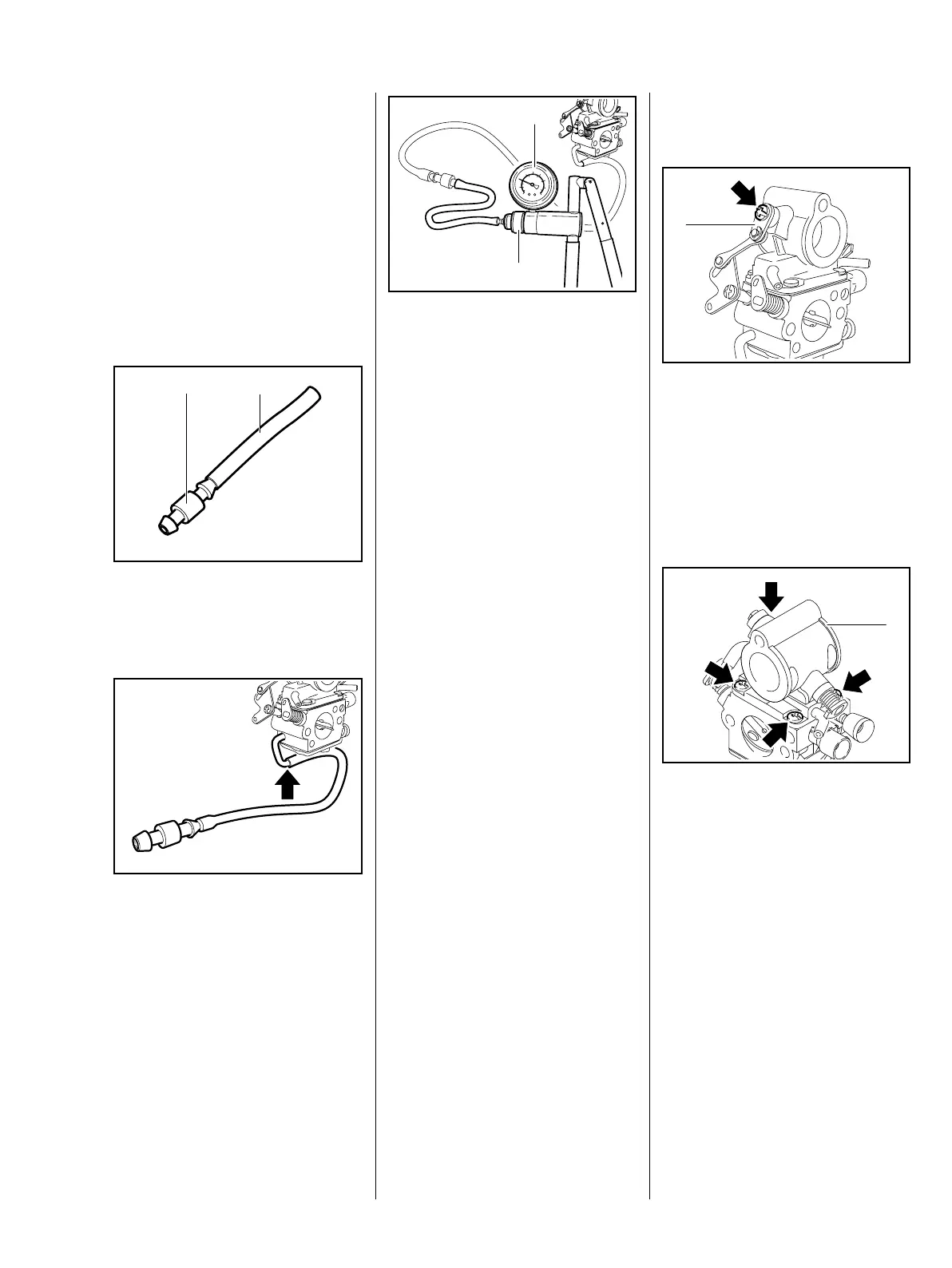79TS 410, TS 420
12.2.1 Leakage testing
The tank vent must also be checked
and replaced if problems develop
with the carburetor or fuel supply,
b 12.7.
The carburetor can be tested for
leaks with the pump
0000 850 1300.
– Remove the carburetor, b 12.2.
: Push the fuel line (1)
1110 141 8600 onto the double
connector (2) 0000 855 9200.
: Push the fuel line with double
connector onto the fuel port
(arrow).
VA
143RA172
2 1
370RA331 TG
– Push the delivery hose of the
pump 0000 850 1300 onto the
double connector.
: Push ring (1) to the right and
pump air into the carburetor until
the pressure gauge (2) shows
a pressure of approx. 0.8 bar
(80 kPa).
If this pressure remains constant,
the carburetor is airtight. However,
if the pressure drops, there are two
possible causes:
1. The inlet valve is not sealing
(impurities in the valve seat,
sealing cone of the inlet needle
is damaged or inlet control lever
is sticking). Remove to clean,
b 12.3.2.
2. Metering diaphragm or gasket is
damaged, replace if necessary,
b 12.3.1.
3. Pump diaphragm or gasket is
damaged, replace if necessary,
b 12.3.4.
– After testing, push the ring (1) to
the left to vent the pump, then
disconnect the fuel line from the
connector on the carburetor.
– Install the carburetor, b 12.2.
– Reassemble remaining parts in
reverse order.
– Tightening torques, b 3.5.
1
2
370RA332 TG
12.3 Repairing the carburetor
12.3.1 Metering diaphragm
– Troubleshooting, b 4.5.
– Remove the carburetor, b 12.2.
: Remove the screw (arrow).
– Remove the lever (1).
: Take out the screws (arrows).
– Remove the end cover (1).
If the gasket and diaphragm are
stuck to the carburetor, they must
be removed very carefully.
370RA333 TG
1
370RA334 TG
1

